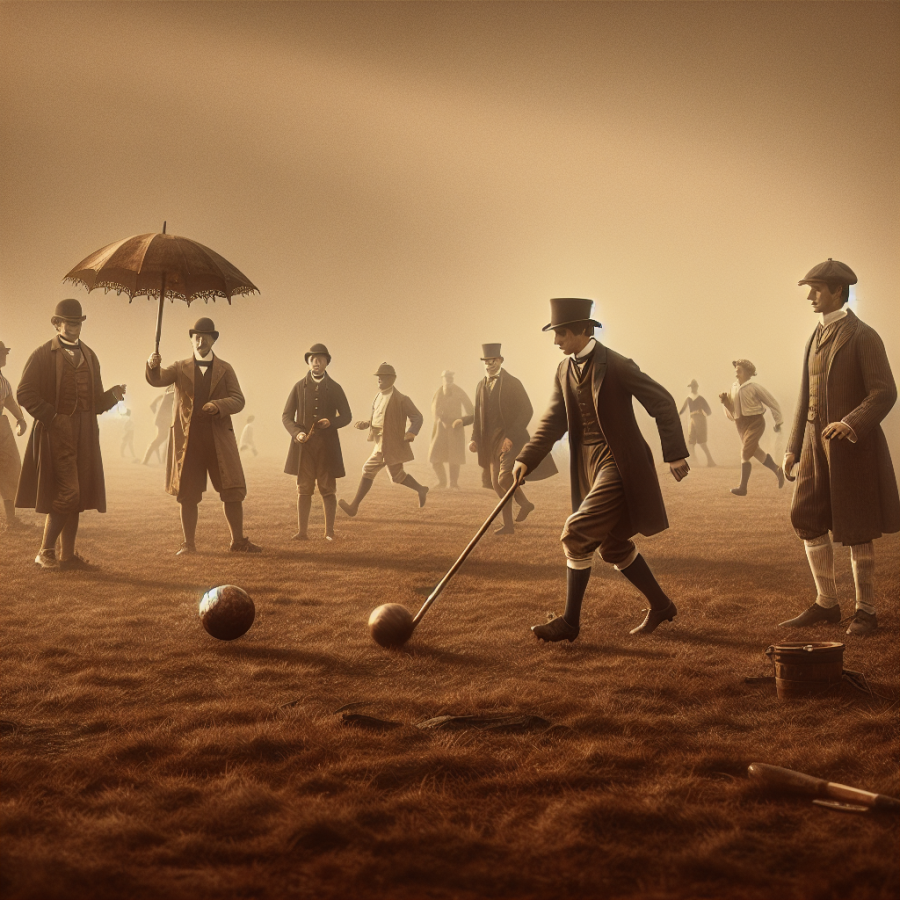Tracing the Roots: Early Forms of Soccer across Civilizations
Soccer, as we know it today, is a sport that has evolved over centuries and across numerous societies. Our journey through the origins of soccer begins tracing these early forms and how they have contributed to the contemporary game.
One of the earliest forms of soccer can be traced back to ancient China during the Han Dynasty, around 206 BC – 220 AD. This game, known as 'Cuju', essentially translates to 'kick the ball with foot'. Cuju players employed animal-skin balls filled with feathers and hair, and the game involved two teams competing to kick the ball into the opponent's net without using their hands.
This early form of soccer had a significant impact on society at that time. It was not only a popular sport among ordinary people but also was promoted by Chinese military strategists as a means of keeping the troops physically fit.
Moving westward to Ancient Greece, a similar sport known as Episkyros was popular in the society around 4th century BC. The Greeks used a ball made from inflated pig’s bladder and the game had elements of both soccer and rugby, as the players were allowed to use their hands.
Many historians argue that the Romans derived their version of the game, Harpastum, from Greek’s Episkyros. Harpastum was a game played by two teams of equal number where the aim was to throw a ball behind the opponent’s line. The sport of Harpastum was well-documented, showing Roman societies' love for ball games.
Our journey continues in indigenous Mesoamerican civilizations around two millennia ago. The Maya and Aztec civilizations played a game known as 'Ulama'. The stylized ball-game had associations with their religious rituals and was much more violent than today's soccer. Players used their hips to propel a rubber ball towards the opponent’s goal.
Crossing the Atlantic to the lands of North America, Native American tribes also had an early form of soccer known as Pasuckuakohowog, meaning "they gather to play ball with the foot". It was a highly aggressive game and often involved hundreds of players. The matches would often last for hours and were seen as a way to resolve conflicts between tribes.
As we move to medieval Europe, particularly in England, the origins of modern soccer start to emerge. The game was then known as 'mob football' and was wildly popular, and just as chaotic.
Read also:
Understanding the Costs: A Comprehensive Guide to Pricing Golf Clubs
Evolution and Modernization: The Transformation of Soccer Over the Centuries
In the verdant expanses of medieval England, villagers kicked a leather ball for fun and entertainment, not realizing that their whimsical pastime would someday evolve into the globally beloved sport known as soccer. Over the centuries, soccer has significantly changed, undergoing a remarkable transformation that offers fascinating insights into the evolution and modernization of the sport.
One profound change that soccer underwent was in terms of its rules. The origins of soccer are tied to a chaotic, often violent game with few or no rules. Different communities had distinct rules, often leading to confusion and tumultuous clashes when teams from different localities played together. It was not until the formation of the Football Association (FA) in 1863, that standardized rules were implemented, providing a less chaotic structure to the sport and paving the way for the soccer we recognize today.
With the FA, another modern innovation was introduced - the creation of governing bodies. These associations were responsible for organizing the various competitions, enforcing the rules, and overall running the sport. Not only were they crucial to the success and popularity of the sport, but they also contributed to the professionalization of soccer.
The evolution of soccer would be incomplete without highlighting the significant advancements in technology. As our understanding of physics and material science grew, so did improvements in balls, boots, and gear. The soccer ball, initially a pig's bladder encased in leather, evolved significantly through the centuries, with the advent of rubber and synthetic materials providing better roundness, durability, and control. This technology also brought a radical change in soccer boots, which transformed from high-top leather boots to today's lightweight, scientifically designed footwear, boosting player's swiftness and performance.
The migration of soccer from a village pastime to stadium-filled professional sport also necessitated changes in how the game was spectated and reported. The invention of radio and television and later, the internet, revolutionized the way people engage with soccer. Today, fans can watch matches live from the comfort of their homes, from bars, on their phones, and more, vastly improving the sport's accessibility and reach.
Furthermore, the advent of soccer analytics brought a new level of sophistication to the game. Coaches, players, and clubs can now leverage vast troves of data to gain insights into player performances and tactics – an aspect of the sport unimaginable to its initial players.
Lastly, but particularly significant, was the introduction of women's soccer.




